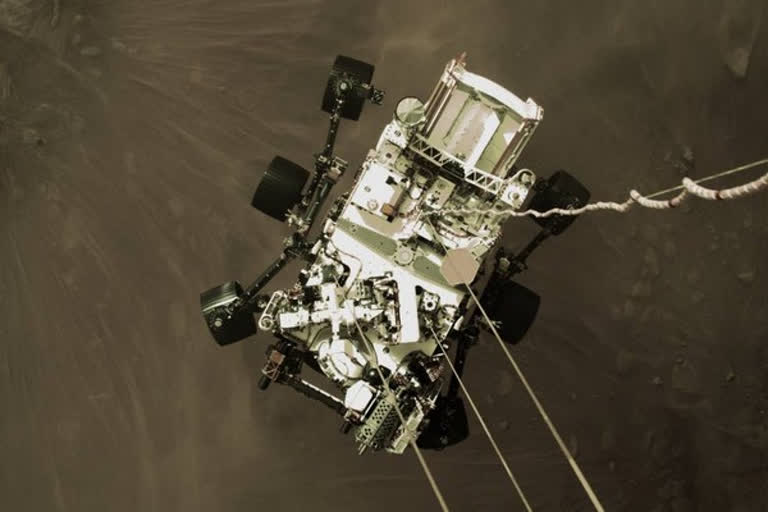California (US): Less than a day after NASA's Mars 2020 Perseverance rover successfully landed on the surface of Mars, engineers and scientists at the agency's Jet Propulsion Laboratory in Southern California were working hard, awaiting the next transmissions from Perseverance.
As data gradually came in, relayed by several spacecraft orbiting the Red Planet, the Perseverance team were relieved to see the rover's health reports, which showed everything appeared to be working as expected.
Adding to the excitement was a high-resolution image taken during the rover's landing. While NASA's Mars Curiosity rover sent back a stop-motion movie of its descent, Perseverance's cameras are intended to capture video of its touchdown and this new still image was taken from that footage, which is still being relayed to Earth and processed.
A primary objective for Perseverance's mission on Mars is astrobiology research, including the search for signs of ancient microbial life. The rover will characterize the planet's geology and past climate and be the first mission to collect and cache Martian rock and regolith, paving the way for human exploration of the Red Planet.
READ: Indian-American Swati Mohan spearheads NASA rover landing on Red Planet
Moreover, in subsequent NASA missions, in cooperation with ESA (European Space Agency), will send spacecraft to Mars to collect these cached samples from the surface and return them to Earth for in-depth analysis.
Unlike with past rovers, the majority of Perseverance's cameras capture images in colour. After landing, two of the Hazard Cameras (Hazcams) captured views from the front and rear of the rover, showing one of its wheels in the Martian dirt.
Perseverance got a close-up from NASA's eye in the sky, as well: NASA's Mars Reconnaissance Orbiter, which used a special high-resolution camera to capture the spacecraft sailing into Jezero Crater, with its parachute trailing behind.
